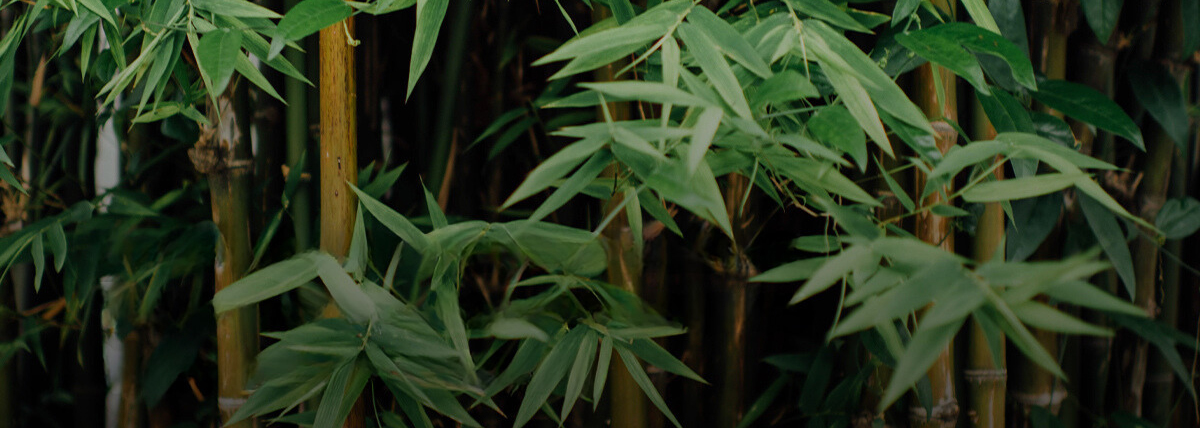In our recent announcement about the very first all-fiber bottle solution, we outline the significance of bamboo and bagasse as key ingredients in our newly developed novel fiber mix for paper bottle pulp. Why are these materials important, and what makes them so useful for sustainable packaging solutions?
In this article, we delve into the intricacies of bamboo and bagasse as raw materials for molded fiber packaging, covering their origins, characteristics, and production processes that make them prime candidates for a sustainable future.
Here’s an overview of what we’ll cover:
- Bamboo: the fastest growing plant on earth
- Bamboo pulp production process
- Bagasse: a sustainable solution to agricultural waste management
- Bagasse pulp production process
- The environmental benefits of bamboo and bagasse
- The way forward for sustainable packaging solutions
Bamboo: the fasting growing plant on earth
Bamboo has been integral to the Chinese culture as an indigenous raw material for centuries. Home to over 861 of the world’s 1,642 known species of bamboo, China has effectively harnessed this valuable resource in various industries, such as construction, furniture making, molded fiber applications, and manufacturing household daily necessities.
Bamboo has a rapid growth cycle. In fact, bamboo holds the world record as the fastest-growing plant on earth, reporting a growth rate of 35 inches a day. This means it can be harvested up to four times yearly, making bamboo a renewable, sustainable resource.
Furthermore, bamboo exhibits remarkable longevity through its regenerative abilities, sprouting new shoots shortly after being harvested, allowing for sustained cultivation over an extended period. It also boasts remarkable strength and flexibility due to its chemical composition, making it the perfect candidate for pulping and paper making compared with other non-wood fibers such as rice and wheat straw.
Bamboo pulp production process
Bamboo is a crucial component in the production of molded fiber, an eco-friendly packaging material made from recycled corrugated pulp, paper, or fast-growing fibers. Here are the key steps involved in bamboo pulp production:
- Harvesting and collection
During the harvesting process, mature bamboo is hand-picked, minimizing ecological disruption, while younger shoots are left to mature, supporting the replenishment of the bamboo groves. Newly harvested bamboo undergoes a drying process to prepare it for subsequent processing.
- Shredding, washing, and depithing
Using portable belt conveyors to load, bamboo bundles enter a pulp mill where they are shredded into standardized bamboo chips ranging in size from 10 to 25mm. These bamboo chips are then thoroughly washed to eliminate impurities and remove the pith (“depithing”). This process is necessary to produce high-grade cellulose pulps.
- Bamboo pulp cooking
Subsequently, the pulping process involves cooking with precise temperature control to produce high-strength, soft-fiber bamboo pulp using pulp cooking machinery. Due to its chemical composition, bamboo is easier to cook.
- Washing, screening, and bleaching
The goal of this last step is to remove residue, dust, and sand from the pulp-making process using a vacuum washer or pressure pulp washer. After that, it goes through a closed screening system. Finally, the bamboo pulp may go through bleaching if required.
Bagasse: a sustainable solution to agricultural waste management
Bagasse, a byproduct of sugarcane processing, is a great alternative for pulp production. Bagasse is primarily sourced from sugar mills after the extraction of sugarcane juice. Its availability is abundant, especially in regions with a significant focus on sugarcane cultivation, like China, and Thailand, positioning it as a readily accessible and renewable resource for pulp manufacturing and molded pulp packaging.
With its fibrous composition, bagasse offers desirable properties for pulp production, including high cellulose content and suitable strength. These characteristics make it a suitable substitute for traditional wood-based pulp, promoting a shift towards sustainable and resource-efficient practices, and complementing the vision of sustainable packaging companies.
As a raw material, bagasse offers a sustainable solution to the persistent challenge of agricultural waste management. By repurposing this byproduct, the pulp industry minimizes the accumulation of agricultural residue and contributes to a circular economy. With global sugar production forecast to climb 10.6 million tons to reach 187.9 million tons this year, bagasse will remain an abundant, sustainable source material.
Bagasse Pulp Manufacturing Process
Like bamboo, bagasse is a key ingredient in the production of molded fiber. Here are the key steps involved in bagasse pulp production:
- Extraction and preparation
The process commences with the collection and transportation of bagasse from sugar mills to specialized processing facilities. Upon arrival, the bagasse is inspected, and any extraneous matter or impurities are removed to ensure a refined and homogeneous feedstock. The bagasse undergoes a series of preparatory procedures, including cleaning, shredding, and drying, to enhance its suitability for subsequent pulping processes.
- Bagasse pulp cooking and screening
Characterized by its ease of cooking, bagasse is well-suited for a range of cooking equipment, with rotary spherical digesters commonly used in small-scale pulp mills. Today’s bagasse pulp production typically involves continuous alkaline cooking and the cold blow technique. Finally, bagasse pulp undergoes a closed screening process, and bleaching if required.
The environmental benefits of bamboo and bagasse
Molded fiber packaging is sustainable from end to end. Bamboo and bagasse are sustainable alternatives to wood. With these raw materials as key ingredients, manufacturing involves upcycling traditionally discarded agricultural waste and utilizing sustainable raw materials. This significantly reduces the burden on natural forests and mitigates the adverse impact of deforestation. By repurposing agricultural waste, the pulp industry also contributes to waste reduction and minimizes the release of greenhouse gases, fostering a more ecologically balanced approach to manufacturing.
Molded fiber packaging also minimizes the impact of end-of-life disposal and contributes to a lower carbon footprint. To put that into perspective, disposable plastic containers take more than 400 years to degrade. In comparison, molded fiber takes 210 days to biodegrade.
The way forward for sustainable packaging solutions
According to a recent McKinsey report on US consumer attitudes towards sustainable packaging, approximately 70% of consumers are willing to pay more for sustainable packaging, such as compostable and paper packaging for fresh produce or recyclable paper mailers to replace plastics. This makes choosing sustainable packaging solutions a win-win solution for businesses to contribute to a circular economy.
As we strive towards a greener future, the integration of bamboo and bagasse as alternative raw materials not only fosters environmental preservation but also underscores the importance of innovation in sustainable manufacturing practices. The journey towards a more sustainable packaging industry begins with the recognition of the untapped potential of these natural resources, driving us closer to a more harmonious coexistence with our planet.











